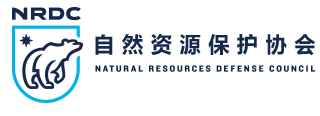 @NASA
@NASA
World Ozone Day arrives with little fanfare each year on September 16th. That’s the anniversary of the signing of the Montreal Protocol, the world’s most successful environmental treaty, in 1987.
There’s a lot to celebrate: A treaty joined by every country on the planet that has virtually eliminated chlorofluorocarbons (CFCs) and dozens of other ozone-destroying chemicals worldwide, protecting the fragile stratospheric ozone layer we rely on to screen out dangerous ultraviolet radiation. The Montreal Protocol is saving millions of lives and avoiding untold harm to agriculture and other vital natural systems. It’s also reducing the speed of climate change.
You can visualize what NASA scientist Paul Newman calls “the world avoided” here.
And you can see this success story well told in a PBS documentary: "Ozone Hole: How We Saved the Planet."
Which is not to say we’re out of the woods yet. This time of year we also witness the most glaring sign of the damage done: the gigantic ozone hole over Antarctica—pictured here. Fortunately, as atmospheric CFC levels slowly decline, the ozone layer is recovering. But it will take a while; the ozone hole is not projected to fully disappear until 2070.
The Montreal Protocol has done more than save the ozone layer. It has also provided a huge climate protection bonus. Actually, a double climate bonus.
Before they reach the stratosphere, CFCs are extremely potent heat-trapping greenhouse gases. Replacing them has slowed climate change by at least a decade. Had we not acted, the world could have suffered this year’s extreme weather 10 years ago. We’d already be suffering even more severe droughts, wildfires, floods, and storms.
But there’s more. A new paper in Nature calculates the damage to forests and other vegetation that would have been caused by additional UV radiation had we not controlled CFCs. It finds that damaged plant life would have pulled far less carbon dioxide out of the air over this century, leaving an additional 115-235 parts per million CO2 in the atmosphere and causing an additional warming of 0.5-1 degree Celsius.
Back in 1987 we knew ozone-destroying CFCs were also powerful greenhouse gases, but the climate benefit turned out to be even bigger than we could have guessed!
It is challenging enough to keep overall warming below 1.5 or even 2 degrees Celsius. Imagine how much harder it would have been without the Montreal Protocol.
So on World Ozone Day—formally, the United Nations International Day for the Preservation of the Ozone Layer—there is a lot to be thankful for.
But there’s still a lot to do. Although production of ozone-depleting chemicals has almost ceased, there are still enormous amounts inside existing air conditioners, refrigerators, and other products. We must do more to keep those chemicals from leaking into the air when those appliances malfunction, when they are repaired, and when they are discarded.
And through the 2016 Kigali Amendment, the Montreal Protocol parties have taken on a new task: Phasing down hydrofluorocarbons (HFCs). HFCs don’t deplete ozone but they are still potent climate pollutants—less powerful pound for pound than CFCs, but still 500-2000 times as potent as an equal amount of CO2. We now have a suite of HFC replacements—ranging from new fluorocarbons, to hydrocarbons, to CO2 itself—that are both energy efficient and have far lower warming impact if they escape to the air.
Nearly 125 countries have already ratified the Kigali Amendment and begun implementing the HFC phase-down. The most recent commitments bring in both China and India, which are big producers of and markets for air conditioning and refrigeration, and for HFCs and their replacements.
President Biden pledged in an early executive order to ratify the Kigali Amendment. We’re expecting the administration to send the treaty up to the Senate shortly. With Kigali backed by both business and environmental supporters, there appear to be the 67 Democratic and Republican Senators needed for advice and consent to U.S. ratification.
Meanwhile, the U.S., which was a prime mover behind Kigali, has also already started implementing the HFC phase-down. Last year Congress passed the bipartisan American Innovation and Manufacturing Act to drive the HFC transition in the U.S. at least as fast as the Kigali schedule. The bill was supported by a coalition running from NRDC to the U.S. Chamber of Commerce.
The Biden EPA has moved fast to implement the new law. Later this month, the Environmental Protection Agency is expected to finalize the first regulations, implementing the required phase-down of HFC production and imports. We expect EPA to act in October on a raft of petitions, filed by environmental organizations, industries, and states, to quickly restrict the use of HFCs in dozens of products where climate-friendlier alternatives are already available. And we’ll press, together with industry allies, for requirements to recover and reuse HFCs that otherwise would leak to the air.
Progress under the Montreal Protocol is a model for broader climate action, as I have written here: We Saved the Ozone Layer. We Can Save the Climate.
A lot accomplished and a lot still to do on this year’s World Ozone Day. Throw a little confetti!


